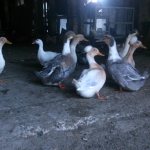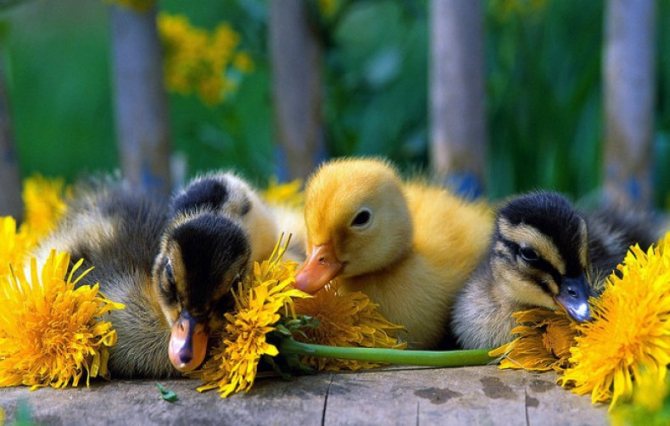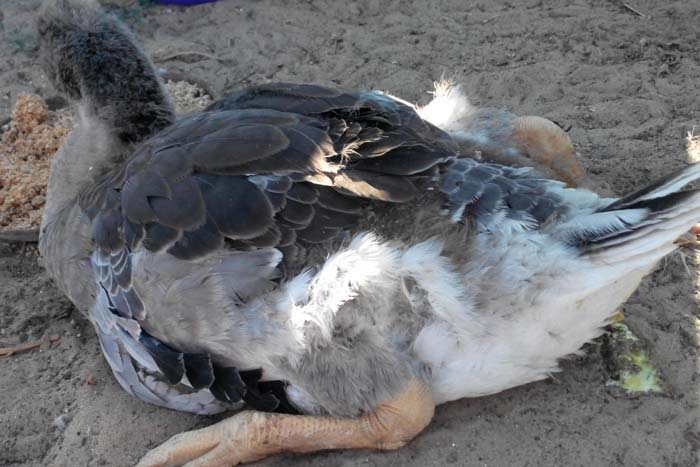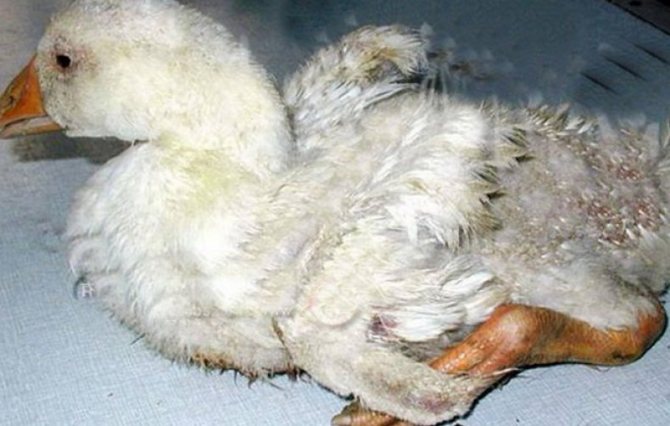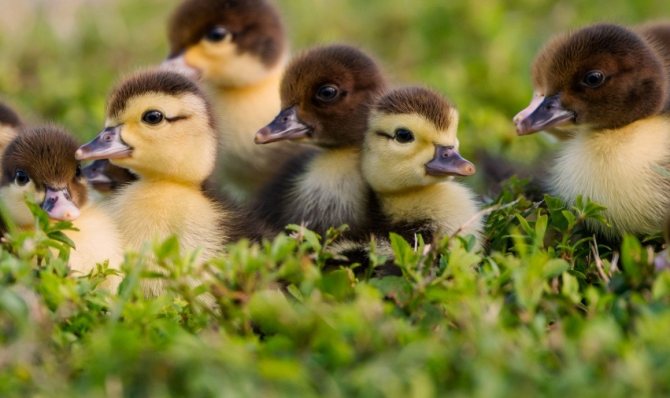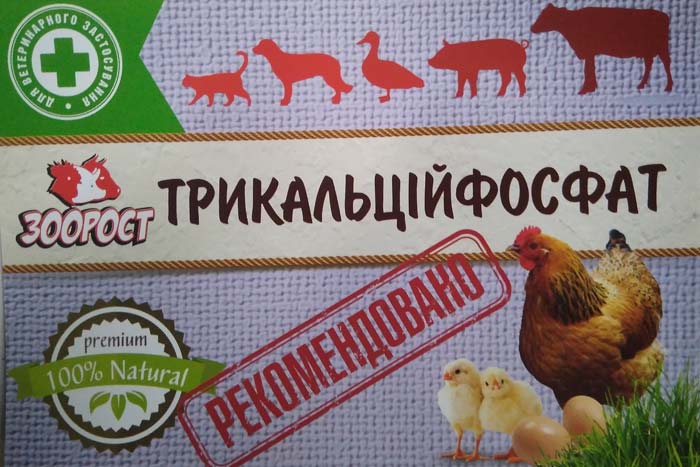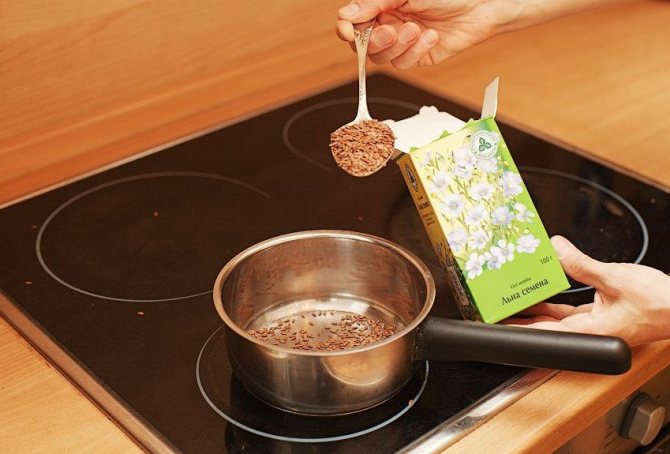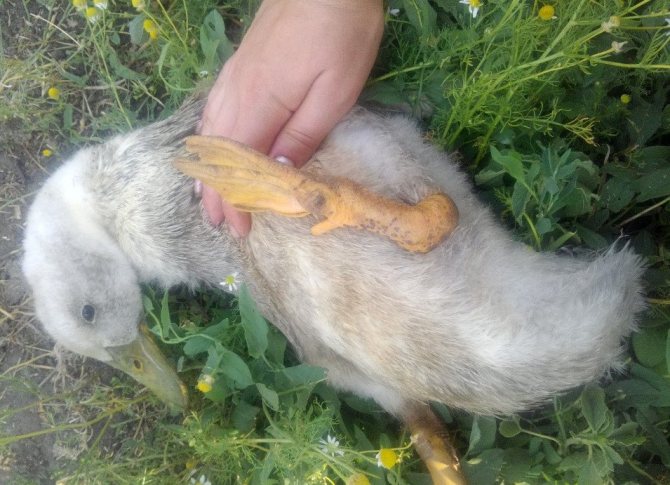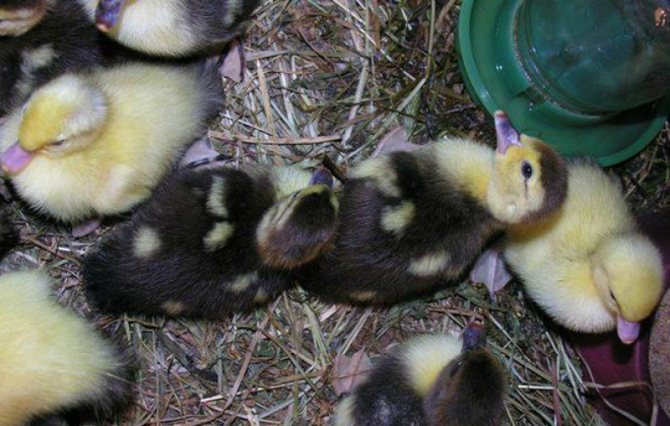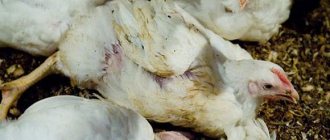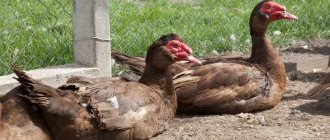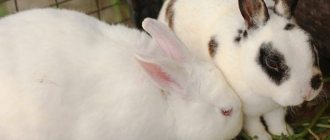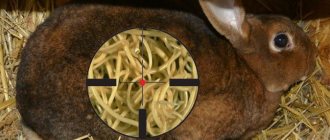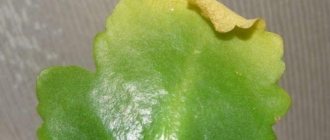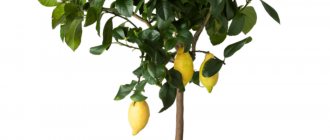Ducks Infectious Diseases
Infectious diseases can destroy a significant part of the young stock. Adult birds are also at risk. If measures are not taken in a timely manner, the infection will quickly spread throughout the herd and lead to the death of a large number of ducks and their chicks.
Aspergillosis
Aspergillosis is a fungal disease. Young ducklings are susceptible to infection, more than half of the diseased die. Adult ducks tolerate the disease easily, death occurs in isolated cases. The fungus affects the respiratory system.
Symptoms of the disease:
- loss of appetite or complete refusal to eat;
- shortness of breath, wheezing, ducklings pull their head forward;
- inflammatory process in the area of the eyes and beak;
- lacrimation;
- weight loss;
- paralysis of the paws.
The disease is almost impossible to cure. To prevent the spread of the disease, the drug "Nystatin" is added to the feeders. In the drinking bowl - a solution of copper sulfate.
To avoid infection with mold fungi, it is necessary to observe the standards of hygienic keeping of poultry. Timely change the litter and take measures to disinfect the premises.

Adult ducks tolerate aspergillosis easily.
Pasteurellosis (cholera)
Pasteurellosis or cholera is a rare disease, but it can destroy an entire flock of birds. Infection is possible from sick birds, rodents, insects, animals of other species. The reason for the infection is not adherence to the sanitary regime of keeping and feeding ducks.
When infected, the gastrointestinal tract is the first to be affected, the mucous membrane of which undergoes granular degeneration and death. Then the liver functions and heart muscle damage are impaired. The incubation period is only a few hours. Ducks fall to their feet, try to flap their wings and move their paws, and instantly die.
Disease symptoms:
- a sharp increase in body temperature;
- redness of the mucous membranes;
- violation of coordination of movement;
- the appearance of foam on the eyes of ducks;
- frothy nasal discharge;
- green, bloody diarrhea;
- refusal to eat;
- intense thirst.
The disease is incurable. All infected livestock must be slaughtered and disposed of.
Tuberculosis
Tuberculosis is an infectious disease in which tuberculous foci can develop on one or more adjacent organs. The disease does not appear immediately, the incubation period lasts from two months to one year.
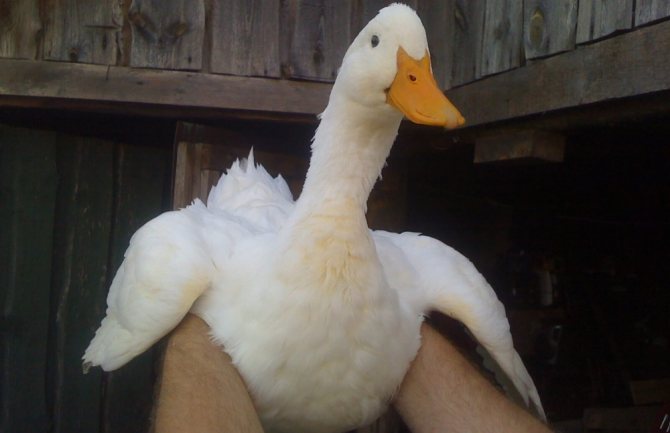

The eggs and meat of birds sick with tuberculosis are dangerous to humans.
The disease does not have an acute period upon infection and quickly becomes chronic.
Tuberculosis symptoms:
- ducks move little;
- the number of fertilized eggs decreases;
- ducks do not lay regularly or stop laying eggs altogether;
- refusal to feed and sudden weight loss;
- the appearance of tumors on the sole, lameness;
- diarrhea (bowel damage);
- yellowness of the skin (liver damage);
- the formation of nodular seals.
Reference! Tuberculosis is transmitted from sick birds to humans and vice versa. Ducks infected with tuberculosis are not treated, they are subject to slaughter and destruction. The eggs and meat of birds sick with tuberculosis are dangerous to humans.
Preventive actions:
- separate rearing of chicks, young and adult ducks;
- exclusion of contact with other species of animals;
- thermal treatment and disposal of slaughterhouse waste;
- use of standard inventory;
- keeping the feed and water clean;
- disinfection 2 times a year;
- carrying out sanitary and hygienic and veterinary measures.


The disease does not have an acute period upon infection and quickly becomes chronic.
Bacillary white diarrhea
The disease is contagious, the causative agent is salmonella sticks. Newly hatched ducklings are most susceptible to infection. When infected, death occurs on the 3rd day.
Symptoms of the disease:
- pale frothy diarrhea;
- drowsy ducklings;
- chicks are inactive, get lost in groups;
- the wings are lowered, the legs are widely spaced to the sides, the head is retracted;
- breathing is rapid, the ducklings breathe through an open beak.
The treatment is not effective, the sick bird is slaughtered.
Contagious rhinitis
In the autumn, with the onset of cold weather, young ducklings begin to secrete liquid from the nostrils and eyes. This is a runny nose, which a large number of birds get sick with in a short time. The runny nose is contagious. It is transmitted from sick individuals to healthy ones.
Symptoms:
- the behavior of ducks does not change, they continue to actively move and eat;
- copious discharge from the eyes and nostrils.
Treatment is by daily instillation of a pale pink manganese solution into the eyes and nose. Fumigation of the house with potassium permanganate vapors.
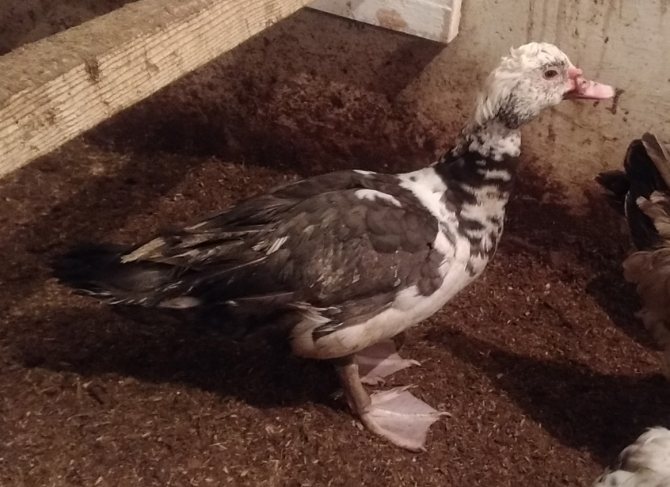

A runny nose is transmitted from sick ducks to healthy ones.
Typhoid
The disease is the most dangerous for an adult flock of poultry. In the acute form of the development of the disease, the death of ducks occurs very quickly. Young animals rarely get sick. If the immune system of the ducks is strong, the disease will come on gradually.
Typhoid symptoms:
- weight loss;
- lack of appetite;
- unsure gait;
- ruffled feathers;
- yellow-green diarrhea.
Treatment - diseased ducks are slaughtered and disposed of.
Viral hepatitis in ducklings
The disease is dangerous, is severe and is characterized by liver damage. Ducklings up to two weeks of age are most susceptible to the virus. With age, they develop immunity to the disease and adult ducks do not show symptoms of the disease, but they can carry the virus for two years. An exception is muscovy ducks - the disease is dangerous for mutees at any age.
Infection with the virus occurs through feces, mucous discharge from the eyes and nose of a sick duck. And also through contaminated food and water. The virus is tenacious, adapts well to external conditions and can persist on the litter, indoors and on inventory for up to six months.
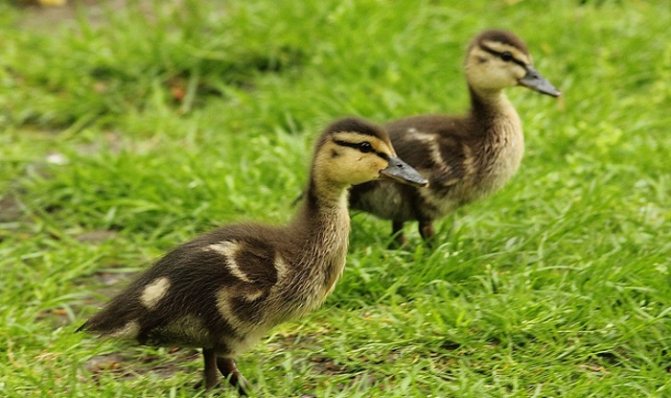

Ducklings up to two weeks of age are most susceptible to the virus.
Getting into the body of a duckling, the virus infects the liver, provokes a disturbance in the activity of the gastrointestinal tract and spreads through the internal organs with blood.
Reference! The disease of ducklings with viral hepatitis in the first week of life leads to their death in 100%. Of 10 diseased chicks at the age of 7 to 14 days, only 2-3 ducklings survive.
Symptoms of viral hepatitis:
- ducklings huddle in small groups in secluded places;
- chicks fall to one side, while lying down move their paws, the head is thrown back;
- convulsions appear;
- the eyelids swell, conjunctivitis develops;
- mucous membranes become bluish, breathing is difficult.
With the transition of the disease into a chronic form, the symptoms gradually disappear, the bird conditionally recovers. In adults who are carriers of the virus or have a chronic form of hepatitis, periodic manifestations of the disease are possible: lethargy, loss of appetite, loss of coordination of movements, shortness of breath.
Treatment of hepatitis in ducklings does not give a positive result - the disease develops with lightning speed, diseased chicks die within a few hours.
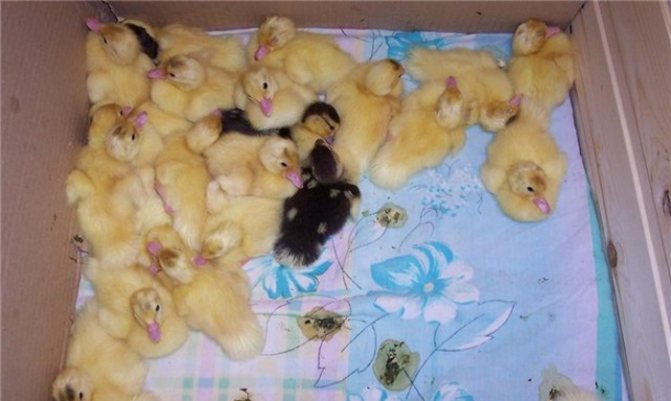

The disease of ducklings with viral hepatitis in the first week of life leads to their death in 100%.
Prevention:
- introduction of specific serum to conditionally recovered ducks;
- separate keeping of young animals;
- timely processing of premises - whitewashing, disinfection;
- acquisition of healthy young stock and eggs from non-infected livestock;
- vaccination of day old chicks.
Coccidiosis
Disease caused by parasitic pathogens. Coccidia are unicellular parasites that are abundant in nature. The ideal habitat and reproduction of coccidia are places with high humidity: bird droppings, soil, water bodies. Once in the body of a duck, they penetrate the intestines, on the mucous membrane of which they parasitize.
Mass reproduction of coccidia leads to the death of the epithelial layer, and the waste products of microorganisms, the poisons and toxins they release, provoke inflammatory processes and necrosis of the intestinal mucosa. The functional activity of the intestine is impaired.
Symptoms:
- Coccidiosis in adult ducks is manifested by loss of appetite, sluggish behavior, edema, and decreased egg production. The stool is dark brown, frothy, and bloody. The duck's weight decreases and the body becomes dehydrated.
- Ducklings refuse to eat and drink, become apathetic. Stool - frequent, bloody, foaming diarrhea. Dehydration leads to mass death of young animals.


Ducklings refuse to eat and drink, become apathetic.
Infection occurs from a sick duck through drinkers, dirty bedding, feeders, infected equipment. Wild ducks and rodents are also considered carriers of the infection. Coccidiosis is more dangerous for ducklings from two weeks of age. A bird older than two months of age gets sick much less often. Adults can be carriers of the pathogen, while they themselves do not get sick.
Diagnostic methods
As practice shows, even experienced farmers are not always able to give their pets the correct diagnosis. In any case, if you suspect a disease, it is better to invite a qualified veterinarian who will be able to determine why the ducks are falling to their feet, and will suggest the treatment necessary for a speedy recovery. But what to do before his arrival? Before the arrival of a specialist, you can independently inspect the chicks:
- If you suspect ectoparasite attack it is necessary to examine the condition of feathers and down in the abdomen and under the wings. Having found ticks or fleas, they immediately seek the help of a veterinarian.
- ABOUT lack of calcium ducklings show poor growth rates, low physical activity and poor plumage.
- Pronounced signs - falling on the paws, loss of feathers, the appearance of diarrhea and discharge from the nostrils - are most likely to indicate a dangerous infectious disease.
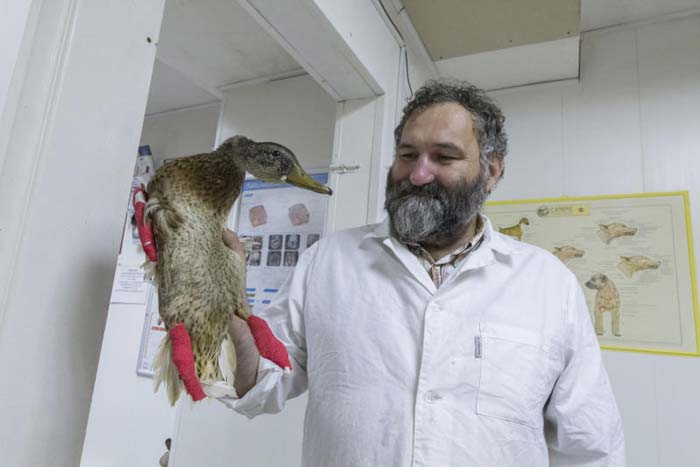

Non-contagious diseases of ducks
Non-communicable diseases are just as worrisome for farmers and worry for poultry. Among them there are those that end in the death of ducks.
Avitaminosis
Avitaminosis develops due to an unbalanced diet, lack or insufficient amount of vitamins and minerals. Sick individuals are absolutely safe for other birds.
Avitaminosis A - the general condition of the duck worsens: ulcers appear on the skin, the feather becomes brittle, the eyes become inflamed, and a mucous liquid is released from the nostrils. Ducks refuse to feed, young growth slows down.
Treatment - enrichment of feed with fresh herbs, pine needle flour, fish oil, carrot roots.
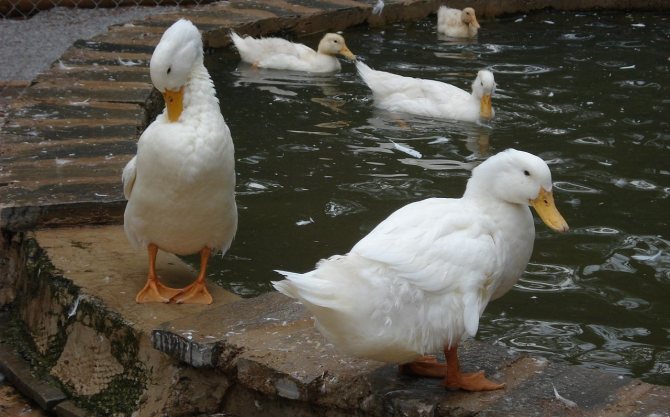

With vitamin A deficiency, ducks become lethargic, feathers become brittle, young growth slowly grows.
Avitaminosis D. Symptoms of the disease - limbs are bent, ducks begin to "drag" their paws. The growth and build-up of live weight stops. The shell of the eggs softens. An adult bird does not stand on its paws. Ducklings develop rickets.
Treatment - dietary changes, fortification with vitamins D2 and D3, use of fish oil. Organization of a place for walking in the summer and artificial irradiation with ultraviolet light in the cold season. Ultraviolet light is essential for the synthesis of vitamin D in the body of birds.
Avitaminosis E. Fodder encephalomalacia is a disease that develops with an insufficient amount of vitamin E. Ducks outwardly look inhibited, lethargic. They develop seizures, coordination of movement is impaired.
Treatment - a balanced diet with the inclusion of foods rich in vitamins - carrots, potatoes, green mass, bran, yeast. Mandatory introduction of dairy products and vitamin E (tocopherol) into the diet.
Avitaminosis B1 disrupts metabolism in the body. Growth slows down and stops. Ducks throw their heads back, with an advanced form of the disease of birds, paralysis breaks.


With vitamin B1 deficiency, ducks may experience paralysis.
Treatment - balanced nutrition, the introduction of yeast, fresh green mass, sprouted grain into the feed.
Avitaminosis B2 provokes a violation of oxidative processes, protein synthesis. Birds are not getting the amino acids they need. Growth and weight gain stop, appetite disappears. Anemia and anemia of the lower extremities develop, curvature of the paws occurs.
Treatment - nutrition enriched with vitamin B2: yeast, grain mixture, wheat germ, dairy products, meat and bone meal and fish meal.
Avitaminosis B12 interferes with the absorption of proteins. Symptoms of the disease: lack of appetite, seizures. Weakness in the lower limbs, often the ducks just crawl. Adult ducks stop laying eggs. Young growth weakens, anemia develops.
Treatment is the introduction of dairy products and animal components into the diet.
Reference! In addition to natural feed, it is necessary to introduce complex feed additives into the diet of ducks, which include all the necessary vitamins, minerals and other useful substances.
Goiter diseases
Goiter diseases are among the most common diseases in ducks.
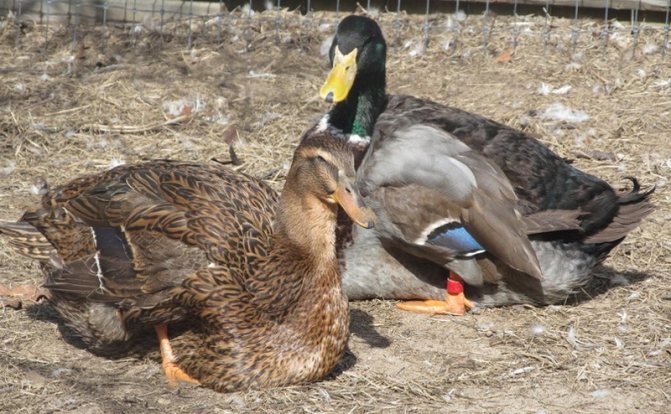

With blockage, the goiter of the duck becomes voluminous and soft.
Goiter catarrh and its obstruction occur as a result of feeding birds with poor-quality food with a sticky texture, poorly chopped root crops, or when foreign bodies enter the goiter.
Goiter catarrh. Symptoms: the goiter is swollen and soft, the bird does not respond to food, periodically opens its beak. The plumage is disheveled, breathing is difficult. The discharge from the beak and nostrils has an unpleasant odor.
Treatment is the emptying of the goiter. During the day, the duck is given only a drink with the addition of hydrochloric acid, then they are fed with liquid milk porridges, gradually returning to their usual diet.
Blockage of the goiter. Symptoms: hard goiter, a foreign body is palpated on palpation. The duck refuses to eat, shakes its head or sits crumpled, not paying attention to anyone.
Treatment is surgery. The goiter is opened, the foreign object is removed, and sutures are applied.
Reference! Treatment is carried out and gives recommendations for rehabilitation only by a veterinarian. An independent attempt to remove a foreign object can be fatal for a bird.
Pica
It cannot be confused with anything.


With a perverse appetite, ducks eat everything that comes their way.
Sick ducks eat everything that comes their way. The cause of the disease is one - the wrong diet, the absence of animal components in the feed.
Symptoms of perverse appetite disease:
- ducks eat what is not intended for food - garbage, stones, sawdust, small chips;
- layers peck at the eggshell;
- birds have an agitated state.
Treatment begins with the isolation of the sick duck in a separate room. A new diet is being prepared for her, in which meat and bone and fish meal, dairy products, waste from slaughterhouses of meat enterprises are introduced. If the measures taken do not give a positive result, the duck is slaughtered.
Inflammation of the cloaca
Cloacite - inflammation of the cloaca develops against the background of a lack of vitamins A and E and an excess of the protein component in the diet of ducks. Metabolic disorders caused by unbalanced food contributes to the formation of uric acid salts, irritating the mucous membrane of the cloaca. The resulting erosion becomes inflamed, ulcers appear. The anus narrows and obstruction develops.
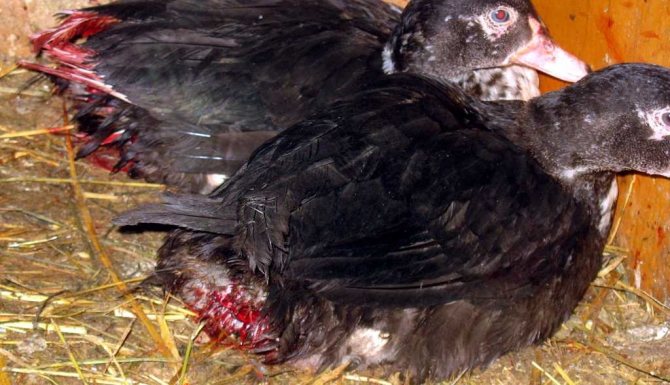

Cloacite is an inflammation of the cloaca associated with a lack of vitamins A and E and an excess of protein in the feed.
Cloacite symptoms:
- erosion and ulcers in the anus;
- inflammatory process of the cloaca;
- unpleasant odor;
- egg production stops;
- the bird is losing weight.
Treatment includes mechanical cleansing of the cloacal mucosa, disinfection with iodine solution and drug therapy using antibiotics and antiseptics.
Inflammation of the oviduct
The disease is common, but it is difficult to accurately explain the reasons for its occurrence. Ducks with high productivity are more likely to get sick during the period of egg production. Very large eggs can also be the cause of the disease.
Symptoms of inflammation of the oviduct:
- the laying of eggs is accompanied by mucous, bloody discharge;
- the oviduct is clogged with curdled masses;
- the oviduct is inflamed and protruded into the cloaca;
- reproduction of offspring worsens;
- the duck is losing weight.
The treatment is not productive, the duck is slaughtered.
Oviduct prolapse
Oviduct prolapse occurs when a duck lays large eggs. Inflammatory processes in the oviduct or cloaca can also cause prolapse.
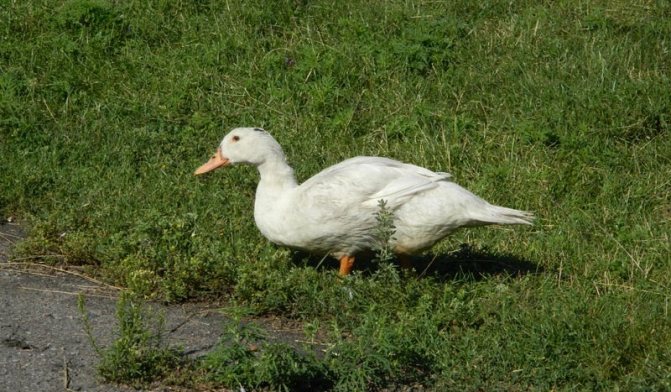

Oviduct prolapse occurs when a duck lays large eggs.
The treatment is simple and the farmer can return the oviduct to its place on his own. The fallen part is carefully washed with clean water with alum and the oviduct is set in place, after having lubricated it with petroleum jelly.
Inflammation of the genitals
Genital inflammation occurs in drakes after mating on dry walks. Ducks, like all waterfowl, must mate in the water. But cellular content violates the laws of nature. Mating "dry" leads to inflammation of the genitals.
Treatment of inflammation is limited to washing the cloaca and lubricating with special agents.
Lack of plumage
Violation of the norms for keeping ducks, poor food, lack of trace elements and vitamins lead to the fact that ducklings have no plumage.
Symptoms of the disease:
- growth retardation;
- slow build-up of live weight;
- lethargic behavior;
- lack of appetite.
Treatment - to change living conditions, observe zoo-hygienic standards, diversify and enrich the feed.
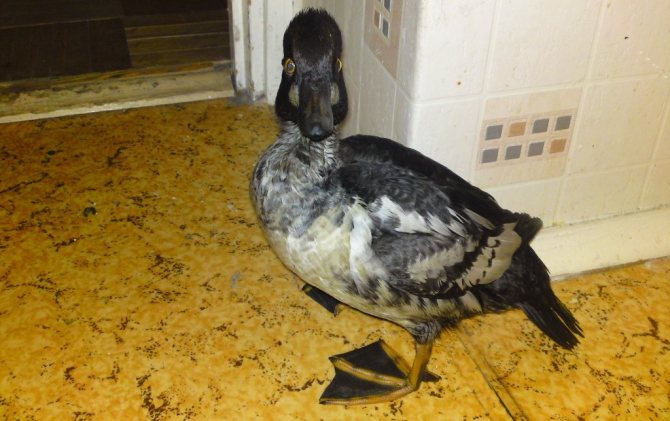

Violations of the conditions of detention lead to baldness of the ducks.
Prevention of non-communicable diseases - balanced nutrition, inclusion of mineral feed, fresh herbs in the diet. Organization of free access to drinking bowls. Compulsory boat trips.
Prophylaxis
In order to avoid the death of a bird, in order to prevent diseases, it is necessary:
- Think well the feeding ration, combining different types of feed.
- Provide high quality feed.
- Store feed as required.
- Keep the house and equipment clean, and regularly disinfect and change the litter.
- Disinfect eggs for incubation.
- Purchase eggs from farms with a safe environment.
- Sow the grass-walking area.
- Vaccinate chicks.
- Avoid caring for the offspring of infected people.
- Isolate ducklings from adult ducks and from other birds and animals.
- Observe the rules of hygiene.
- Inspect chicks regularly.
- Isolate infected babies.
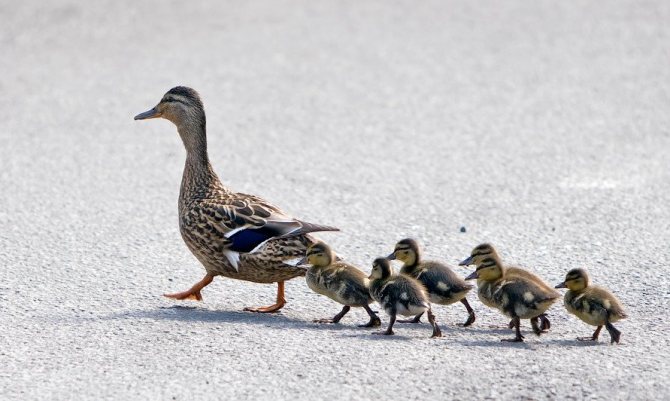

Now you know the reasons that lead to the fact that the ducklings fall, and what to do in each case. Regardless of the cause, problem, it is better to prevent them from occurring and take preventive measures.
Helminthiasis and other parasitic diseases of ducks
Each farmer strives to monitor the nutrition and maintenance of chickens, and protects them from infections.And suddenly trouble comes from where they did not expect - infection with parasites. Infestation by worms or external parasites can be mistaken for leg ailments, as little ducklings squat and fall on their paws when attacked by blood-sucking insects.
Helminthic diseases
Ducks become infected with worms through water or food. Parasites spread throughout all internal organs and disrupt their activity. The infection spreads very quickly throughout the herd.
Symptoms of worm infestation:
- weak immunity;
- decrease in egg production;
- lethargy;
- weight loss;
- plumage becomes dull;
- with a strong invasion, diarrhea begins.


Little ducklings often suffer from worms.
Treatment for helminths is difficult and not always effective. More benefit will be the prevention of helminthic diseases.
Echinostomatidosis
The disease is caused by infection with trematodes that parasitize the intestines of ducks.
Infection symptoms:
- the state of the birds is depressed;
- lethargic, apathetic behavior;
- weight decreases;
- diarrhea.
Treatment is carried out with the drugs "Fenasal" and "Bitionol". After three days of quarantine, they are transferred to more favorable conditions.
External parasites
Ticks, lice, chewing lice not only bring anxiety to ducks, but affect their development and growth.
Infection symptoms:
- restless behavior;
- delayed development of ducklings;
- decrease in egg production;
- loss of appetite.
Treatment - installation of ash and sand baths. Treatment of the sites of dislocation of parasites with sulfur-mercury ointment (under the wings and around the cloaca).


In the walks, it is necessary to install ash baths in which the ducks clean their plumage.
Prevention of parasitic diseases - regular pest control and disinfection, timely cleaning of the duck-walking area. Whitewashing the walls of the poultry house and treating the premises with solutions of karbofos and chlorophos before re-planting the ducks.
Treatment of external parasites
In this case, it is recommended to initially examine the ducks in the abdomen, under the wings and on the paws.
If harmful insects are found, urgent measures must be taken, since the pests have the ability to spread quickly.
To get rid of external parasites, it is recommended to treat not only the bird, but also the poultry house. To do this, you must first move the ducks to another room.
Treat the walls and floors of the infected house with aggressive solutions such as lime, used engine oil or potassium permanganate.


Be sure to read:
What to do if mularda peck each other's feathers to blood: causes and treatment?
When processing, it is necessary to sprinkle or lubricate all surfaces abundantly. It is necessary to repeat the procedure after 7 days.
To remove lice and lice from poultry, it is recommended to use the following drugs:
- Deltamethrin. The product is available in powder form. Protective gloves and a mask must be worn before treatment. Powder powder should be rubbed into feathers all over the body, except for the head. Each duck must be processed separately.
- Butox. The drug also contains deltamethrin. The form of release of the product is a liquid solution, which facilitates processing in case of mass invasion. One ampoule of Butox is enough to prepare 4 liters of working fluid. During the procedure, it is necessary to adhere to safety measures, therefore, gloves and a gauze bandage should be worn. The product should be sprayed over the bird, avoiding the eye and beak area.
In addition to lice and chewing lice, the population of ducks can be affected by a tick. In the absence of adequate treatment, the bird dies 2-3 days after infection.
The parasite attacks areas without feathers.


In the fight against external and internal parasites, it is important to pay increased attention to prevention
A characteristic sign of damage is the appearance of horny scales on the limbs, which subsequently begin to puff up and cause itching, so the bird often pecks the damaged areas to blood.
To combat ticks, veterinarians recommend using the following remedies.
- Boric petroleum jelly. The product has an oily consistency. Apply the product for regular application to the affected areas (3 times a day). The duration of the course is 1 week. Repeat therapy three times, every 20 days.
- ASD-3. For processing, it is necessary to mix the drug with any vegetable oil 1 to 5. In the future, the resulting mixture is used in the same way as boric petroleum jelly.
In the fight against external and internal parasites, it is important to pay increased attention to prevention, which will eliminate the likelihood of re-infection.
To do this, you must adhere to some recommendations:
- Keep drinkers and food containers clean.
- Make bedding from herbs, the smell of which scares away parasites (wormwood, pine needles, calendula, mint, garlic).
- Newly acquired ducklings are first isolated from the main livestock for several days.
- In places of walking, install bathing tanks filled with sand and ash. Keep the mixture dry and add regularly to the trays.
Non-communicable or non-communicable diseases
Noncommunicable diseases are less dangerous because they are not transmitted, but only affect one individual. Often such diseases are associated with improper care and nutrition, trauma of Indo-women.
A list of common non-communicable diseases among Indo-women:
- vitamin deficiency (lack of vitamins A, B1, B2, B12, D, E);
- cloacite;
- goiter catarrh;
- blockage of the goiter;
- food poisoning;
- cannibalism;
- yolk peritonitis.
Avitaminosis A
The cause of the disease is an imbalance in the diet of the Indo-woman.
Symptoms:
- pallor of paws, skin and beak;
- ruffled feathers;
- decrease in egg production;
- loss of appetite;
- conjunctiva with lacrimation;
- weakness;
- souring of the eyelids;
- slowdown in growth rates.
Treatment:
For treatment, fish oil is used (2-3 drops within 2 weeks). It has a good effect on the skin and improves immunity. Increasing the amount of feed with vitamins and microelements.
Prophylaxis
For prophylaxis, Indo-duck is given herbal flour, fresh herbs and carrots, algae: hornwort, duckweed).
Avitaminosis B1
Avitaminosis B1 leads to disruption of the nervous system.
Symptoms:
- weakness;
- throwing back the head;
- convulsions;
- slowdown in growth rates.
Treatment and prevention
Indo-duck is fed with herbs, bran, yeast and grain.
Avitaminosis B2
Symptoms:
- deformation of the joints of the legs;
- anemia;
- lack of appetite;
- slowdown in growth rates.
Treatment and prevention
Indoor women are given dairy products: yogurt or sour cream, herbs, bone meal.
Avitaminosis B12
Symptoms:
- cessation of laying;
- anemia;
- lag in sexual development in young animals;
- lack of appetite.
Treatment and prevention
Indo-duck women need to be given liver, bone meal or fish meal, yogurt or sour cream.
Avitaminosis D (rickets)
Vitamin D deficiency leads to disruption of mineral metabolism.
Symptoms:
- developmental delay;
- soft bones and beak;
- weakness of the paws;
- Indo-duck eggs have a soft shell.
Treatment and prevention:
Birds are given fish oil, yeast, minerals, shells, chalk, fish meal. They walk in the fresh air, in severe cases they are irradiated with ultraviolet lamps.
Avitaminosis E (white muscle disease)
Symptoms:
- birds close their eyes;
- the heart beats badly;
- lack of appetite;
- convulsions begin;
- egg laying stops.
Treatment:
Muscovy ducks are given tocopherol (one drop per feed) as a treatment.
Prevention:
Birds are given wheat, grass flour, milk waste.
Cloacite
The disease is characterized by inflammation of the mucous membrane of the cloaca in the female. Cloacite is most often caused by a lack of vitamins and minerals.
Symptoms:
- contamination of the down at the cloaca;
- exhaustion;
- cessation of laying;
- redness of the mucous membrane;
- covering of the cloaca with ulcers.
Treatment:
The mucous membrane is cleaned of pus with iodine (5%), washed with furacilin. Later, the area of the cloaca is smeared with zinc or tetracycline ointment.
Prevention:
In places of walking, they put a trough with shells.
Goiter catarrh
The disease occurs due to the feeding of the indowka with sticky food, the ingestion of inedible food.
Symptoms:
- Indo-woman is restless;
- the neck is stretched;
- bloating goiter;
- discharge from the mouth of a mixture with an unpleasant odor;
- lack of appetite.
Treatment
Holding by the legs, the Indo-duck is thrown over head downward and stroked with the palm of the hand, causing vomiting. After that, the musk duck cannot be given food for a day, but only drink with a 0.5% solution of hydrochloric acid. The next days, the Indo-duck is fed with liquid porridge.
Prevention:
- it is necessary to give food with a uniform texture;
- Indoor contact with small stones must not be allowed.
Blockage of the esophagus
The disease occurs due to the ingestion of a foreign object by the Indoor.
Symptoms:
- weakness;
- lack of appetite;
- hardening of the goiter.
Treatment:
An operation is required.
Food poisoning
Eating poisonous mushrooms or plants can be the cause of food poisoning.
Symptoms:
- weakness;
- diarrhea or constipation;
- vomiting;
- sometimes convulsions.
Treatment:
The bird should be given plenty of water and absorbents (activated carbon diluted in warm water). After the bird, you can give a combination of charcoal and magnesium sulfate (0.5 g of coal per 10 ml of magnesium per 1 kg of weight).
Prophylaxis
It is necessary to monitor the freshness of the feed and not to allow indoor feeds to places where poisonous mushrooms or plants grow, to hide poisonous drugs.
Cannibalism
Symptoms:
- pecking legs;
- plucking feathers from each other.
Treatment
Aggressive ducks are sent to the slaughterhouse, the duck bedding is monitored for dryness, and they are fed with supplements with vitamins and herbs.
Prophylaxis
- a varied diet containing vitamins and minerals;
- monitoring the humidity in the duck;
- Indoor walk on the street.
Yolk peritonitis
Yolk peritonitis affects from 6 to 12-13% of adult Indo-women. Inflammation in the peritoneum is also characterized by gastrointestinal problems.
Symptoms:
- weakness;
- lack of appetite;
- gluing down in the area of the cloaca;
- decrease in the rate of laying;
- temperature increase.
Treatment for peritonitis is useless, the Indo-woman dies after seven days.
Prophylaxis
Indo-duck is fed with food with the addition of vitamins and minerals, walked in warm weather, kept in spacious ducklings.
Avitaminosis A
The lack of vitamins of group A is reflected in the eyes of the bird.
Symptoms: a sick bird loses its appetite, due to which growth stops. First of all, vitamin A affects the bird's eyes, and it develops an inflammatory process in the conjunctiva. This is manifested by an increased release of exudate from the eyes and sourness of the eyelids. In adults, egg production decreases, the appearance changes (the plumage becomes disheveled and pale), general weakness appears, which is manifested by an uncertain gait.
Treatment: it is necessary to revise the poultry ration and enrich it with the necessary vitamin. For this, foods with a high carotene content (carrots, greens, duckweed, nettle, needles, etc.) are well suited.


Infectious or contagious diseases
Infectious diseases of poultry are dangerous due to infection of other individuals. If an Indo-woman contracted an infection, then sometimes she dies after 2-5 hours, without waiting for the necessary drugs.
The disease can be transmitted not only to animals, but also to humans. Do not allow children, the elderly, people with a weakened immune system (for example, due to an infection) to approach sick birds.
A list of common infectious diseases among Indo-women:
- paratyphoid (salmonellosis);
- viral hepatitis;
- eimeriosis (coccidiosis);
- pasteurellosis (cholera).
Paratyphoid (salmonellosis)
Paratyphoid fever mainly affects ducklings, but adult Indo-ducks can also be infected. Salmonellosis is infected through food, drink, airborne droplets, eggs. There are two forms of salmonellosis: acute (mainly in ducklings) and chronic (in adults).
The mortality rate for the first form is 80%. Recovered young adults in adulthood lays 10-20% fewer eggs that are infected with this infection. The brood hatched from infected eggs will also get sick with salmonellosis. Paratyphoid is very dangerous to humans. The incubation period lasts from 12 hours to 7 days.
Symptoms:
- diarrhea;
- decreased appetite;
- lethargy;
- drooping wings;
- conjunctiva;
- gluing of the eyelids and a cannon in the area of the cloaca;
- staggering gait;
- increased body temperature.
- falling to his feet and convulsions (after which death quickly occurs).
Treatment
They are treated with antibiotics: biomycin (0.05-0.1 g two to three times a day for half a week), tetracycline (0.2-0.3 g 2 times a day for five days). Medicines are mixed with food.
Prevention:
- burning the bodies of dead Indo-women;
- disinfection of ducklings;
- early feeding of newborns;
- feeding with fresh herbs, yeast;
- avoid contact with stray animals.
Viral hepatitis
This disease affects the liver of birds, often in severe forms. At autopsy, the liver of animals with hepatitis is spotty and covered with hemorrhages.
Symptoms:
- weakness;
- drooping of the head and wings;
- hard breath;
- falling on the side and convulsions (near-death stage).
Treatment
Treat patients with hepatitis indotok with antibiotics only as directed by a veterinarian.
Prevention:
- disinfection of ducklings from insects and rodents, because they are carriers of the disease;
- wet cleaning;
- upon detection of sick Indo-dots, the rest are given fish oil, biomycin, tetracycline.
- isolation of sick birds, burning of their corpses.
Aymeriosis (coccidiosis)
Aymeriosis affects the intestines of the Indoor. Most often, ducklings are sick, whose age does not exceed four months. There are two forms of coccidiosis: acute (during the first seven days of the disease, in 80% of cases it ends in death) and chronic (usually a consequence of acute). Infected with eimeriosis through droppings, drinks, food, air.
Symptoms of eimeriosis:
- green diarrhea, which later turns brown with blood clots;
- decreased appetite;
- lethargy;
- difficulty in movement;
- ruffled feathers.
- the desire of a sick indow to be near a heat source
Treatment
They are treated with amprolium (dose: 0.25 grams per kg of feed for a week), zoalene (0.37 g per 1 liter of liquid per week), bikox (1 ml per 1 liter of water for 2 days).
Prevention:
- to carry out cleaning in the duckhouse;
- minimize contact with stray animals.
- Give healthy birds coccidiovitis (0.145 g / kg feed for 7 to 10 days) or zoalen (0.125 g / kg feed for 2 months)
- disinfect the chicken coop (treat perches and feeders with ammonia);
- burn corpses or bury them away from the chicken coop.
Pasteurellosis (cholera)
Cholera can be transmitted through food, drink, airborne droplets, equipment, bedding, feces, insect bites.
There are two forms: acute (inflammation of the mucous membranes) and chronic (inflammation of the organs and mucous membranes). The probability of death of an Indo-female in acute form of cholera is 80%. Symptoms:
- decreased appetite with increased thirst;
- weakness;
- swelling of the joints of the legs;
- discharge from the mouth;
- wheezing;
- diarrhea with yellow / green blood clots;
- temperature rise up to 43.5 degrees.
The treatment is not effective. The meat of slaughtered animals infected with cholera is not eaten.
Prevention:
- inoculation of young animals;
- disinfection of ducklings;
- burning of corpses of Indo-women;
- limiting contact with stray animals;
- treatment of ducklings from rodents and insects.
Useful video
Like the author! 1
- Even more interesting:
- How to prevent the death of chickens
- Marek's disease of chickens: description, methods of control
- Diseases of turkey poults and their treatment
Discussion: 2 comments
- Victoria:
08/04/2018 at 17:22Many thanks. Everything is clear and understandable.
Reply
- Olga:
03.12.2018 at 11:03
get on their feet straight disaster
Reply
Why ducklings fall to their feet, how to treat and what to do in general in such a situation
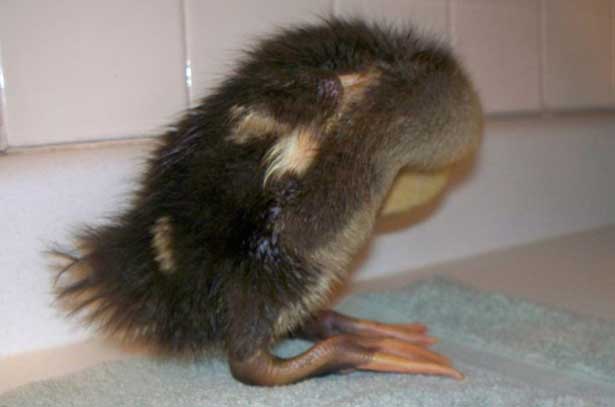

What is important when raising poultry? Properly feed her, maintain and treat her on time, and even better prevent diseases. Today we will talk about a problem that worries so many duck breeders: why ducklings fall to their feet and how to treat this misfortune. Often, such a death on the paws ends up very badly for ducks - right up to their death, so it is important for the owners to know what to do in this situation.
From the article you will learn:
- 1 Ducklings fall to their feet: possible causes
- 2 How to feed ducklings so they don't fall to their feet
- 3 What to do if ducklings fall to their feet as a result of an invasion of parasites
- 4 Summing up
Ducklings fall to their feet: possible causes
The difficulty in finding out the reasons why the ducks fell to their feet is that these birds are characterized by weakness in the paws with many diseases. Therefore, just to say what exactly happened to the ducklings who suddenly fell on their paws offhand is quite difficult. In addition to the very fact that the duckling cannot rise to its feet, it is necessary to examine the chick to identify additional signs that would help establish the correct diagnosis.
Of course, the best option would be to take a few ducklings to the veterinarian or invite a specialist to your home. The doctor will examine the ducklings, perhaps perform an autopsy of a particularly weak one, diagnose and prescribe treatment. But if it is impossible to invite a veterinarian for some reason, consider the following.
Most often, ducklings fall to their feet for two reasons. The first is unhealthy nutrition
ducklings fall to their feet for two reasons
(lack of vitamins and microelements), the second - the chicks suffer from external or internal parasites. Sometimes ducklings fall to their feet with infectious diseases, for example, on the forums I met complaints from poultry farmers, in which ducklings fell to their feet with such a disease as salmonellosis. In the first case, adjusting the diet will help, in the second - antiparasitic treatment, in the third, you need to consult a doctor for the appointment of appropriate antibiotics.
How to feed ducklings so they don't fall to their feet
The food you give your ducklings may be low in minerals and vitamins. If, in addition to the fact that the ducklings have fallen to their feet, they have such signs as: lethargy, growth retardation, inflammation of the eyes, excessive thinness, ducklings pull the fluff out of each other's heads - they most likely have vitamin deficiency and need to take measures.
In the first week, ducklings need to be fed with a balanced feed with vitamins and microelements. It is best to give them so-called starter food for ducklings or add special premixes. However, this may not be enough.
From the third day, ducklings need to be accustomed to grass. At the beginning we try to give the kids nettles. It is rich in vitamins and is well absorbed by chicks. Then we give euphorbia and dandelion leaves, sometimes dill, and later we introduce other greens into the diet.
The herb should be introduced gradually, starting at 10% of the total diet and increasing to 50%. From the second week, you can give the ducklings a mash. The composition of the mash is best to include compound feed, crushed barley, fish oil, chalk, finely chopped grass.
From the third week, compound feed should be excluded from the mash, and the proportion of grass, on the contrary, should be increased to 50% of the diet. You need to feed the ducklings 4 times a day, and between feeding still give greens, preferably plenty. It is especially important to provide greens if you feed your ducklings exclusively with starter food. Whatever the manufacturers write on the packages, natural food cannot be excluded from the poultry diet. Moreover, additives are important if you are transferring ducks from starter feed to regular feed or grain: during the transition period, the feed becomes poorer in vitamins, the duck's body is rebuilt and stabilization of the nutrient content is extremely important.
If the ducklings fall to their feet, adding ground eggshells, shells, bone meal, finely grated carrots and fish oil to the feed can help. These supplements will compensate for the lack of calcium and vitamin A. Also, if possible, it is good to add cottage cheese and boiled eggs to the food of ducklings from time to time. This will provide the young stock with the necessary proteins and calcium.
When the chicks become older, you can enter the leaves of young corn, grated zucchini, pumpkin, boiled potatoes, mixed with mixed feed into the diet. True, with pumpkin and zucchini, it is better to be careful too. You should not transfer the bird only to this type of sack (many poultry breeders sin this). It is just such monotony that can lead to the fall of the ducks on the legs.
What to do if ducklings fall to their feet as a result of an invasion of parasites
The second reason why ducklings fall to their feet is that your birds are suffering from parasites. It could be like
ducklings
external parasites, and internal - worms. In the fight against this scourge, both timely treatment and prevention are important. In this case, you cannot do without medical intervention.
Outdoor poultry parasites or ectoparasites are arthropods that live on or inside the skin and feathers (mites, down and feathers). They are transmitted from bird to bird and especially often appear in small poultry houses.
Examine the bellies and wings of the ducklings to identify ectoparasites. If you see an unnatural condition of the feather and skin - take action. To eliminate them, you need to treat the room in which the ducklings are kept with anti-ectoparasitic drugs, and the chicks are added special medicines to their drink or feed, or they are treated with special solutions externally.
Internal parasites in poultry are also removed with drugs. For their appointment, it is advisable to contact a veterinarian. Folk remedies in this case, it is better not to use, so as not to harm. Moreover, modern drugs are quite effective.
Important note! If you use any drug to remove parasites, act strictly as directed by your doctor or the instructions attached to the drug. Do not vary the dose at your own discretion, as much as you would like to speed up the result. Preparations of this class are toxic and amateur performance can result in the death of the bird.
For the prevention of parasites, you need to ensure that the ducks are not too crowded, as well as that the feeders and drinkers are clean. This is especially important in hot weather, because moisture plus heat is the optimal breeding ground for parasites and fungi. Sometimes prophylactic antiparasitic treatments of cells and poultry can be done.
Content errors
Improper maintenance of ducklings is manifested in the following:
- non-compliance with the requirements for the arrangement of the walking area;
- excessive stocking density;
- poor microclimate.
We also recommend that you learn how to pluck a duck correctly and quickly at home.
Improper arrangement of the walking area
Even problems on the walking area can lead to the fact that the chicks do not keep on their feet.
Among such problems, the presence on the territory of:
- fragments;
- thorny plants;
- acute-angled stones;
- snow.


The walking area must be cleaned regularly, covered with litter in winter, and sowed with grass in spring. High humidity also has a negative effect on health.
High planting density
If the ducklings are cramped, they can trample each other's feet, the weaker ones will not be able to get close to the feeders and eat normally, as a result they become weak and do not rise to their feet.
Important! Do not plant more than 14 small and 7-8 matured ducklings per 1 sq. m of the poultry house area.
Inconsistency of the microclimate with the recommended standards
Optimum temperature, absence of drafts, fresh air protect babies from exhaustion.
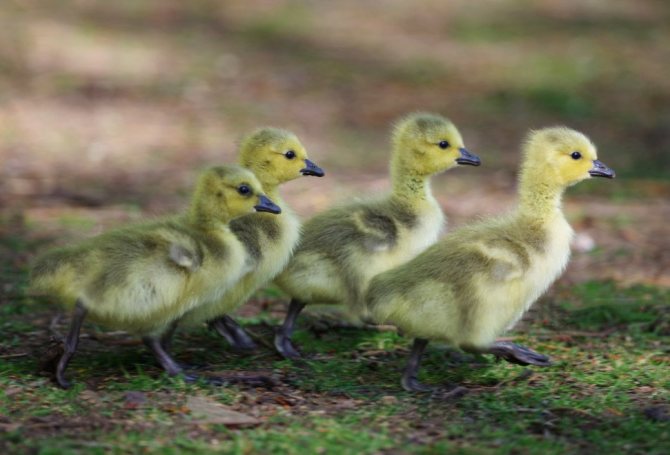

Signs of a disturbed microclimate can be:
- chicks huddle or scatter in different directions;
- the beak is kept open;
- breathing heavily;
- move a little.
To solve the problem, you need:
- arrange heating of the poultry house so that the temperature is about 28 ° C;
- provide humidity at the level of 55-60%;
- provide ventilation openings and windows, ventilate regularly;
- equip artificial lighting.
We advise you to find out how many days a duck incubates eggs.
Paratyphoid (salmonellosis)
One of the most difficult infections that often occurs among poultry, including Indo-Ducks. The causative agent is the bacterium Salmonella.
Symptoms: the affected birds lose their appetite, there is a lag in development. The bacterium infects the digestive tract of a bird, which is manifested by the occurrence of frequent diarrhea, with liquid droppings of a green color.
In the case of the development of an acute form of the disease, mortality among the livestock can reach 60-80%. Eggs carried by sick birds, already infected, and a brood hatch from them, which is the carrier of the paratyphoid pathogen.
Treatment: a specific serum can be used to treat this disease.


Worms
Domestic Indo-Ducks, along with other birds, quite often become victims of parasites, especially helminths.
Symptoms: worms are a significant threat to young ducklings, because their body is not yet strong enough to resist the parasite. Because of them, ducklings lose body weight, lag behind in growth and development, and also lose their reproductive ability. Against this background, the duckling becomes an easy victim of various infections and viruses, which provoke the development of various kinds of complications.
Treatment: the basis of the fight against worms consists of the use of anthelmintic drugs. Some poultry farmers rely on folk remedies to feed the birds with garlic, onions, or pine needles.
Prophylaxis: helminthiasis is very easy to prevent, it is enough to give the indoor livestock anthelmintic drugs, as well as regularly clean up in the poultry house.
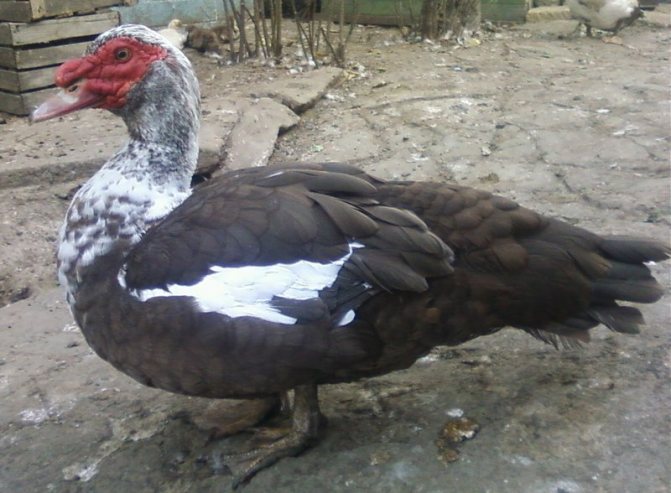

How to feed weekly ducklings.
Ducklings at the age of one week are already actively eating food and the main food for them will already be compound feed, you can make compound feed for ducklings yourself from the ground. They keep one week old ducklings in a brooder.


To do this, you need to finely grind corn and wheat grains on a grinder, mix and give to ducklings in the form of wet mash.
Advice! Wet mash quickly begins to sour and deteriorate, so mix enough mash so that the ducklings eat it right away.
You need to feed the ducklings at least 6 times a day.
Do not forget about the prevention of gastrointestinal diseases, add a little potassium permanganate to the water a couple of times a week so that there is a slightly pink consistency.
Starting from a week of age, ducklings can already be grazed on the grass, for this you can build an aviary and put it on young grass. If this is not possible, then you can simply pick up the herbs and put the ducklings, they can already peck it on their own.
To improve digestion, ducklings need to put a feeder with crushed chalk, crushed eggshells and fine gravel.

